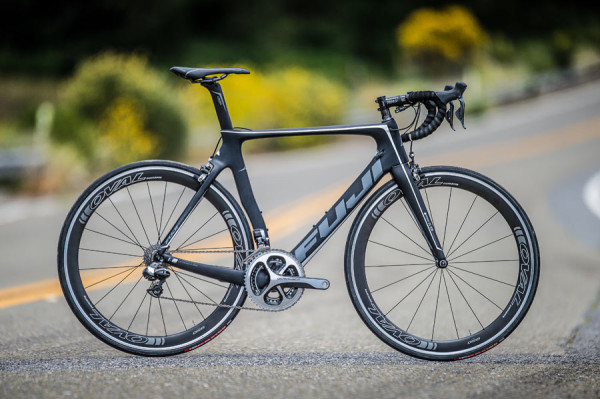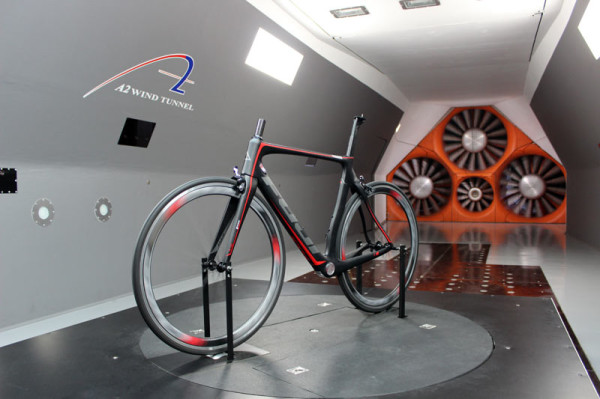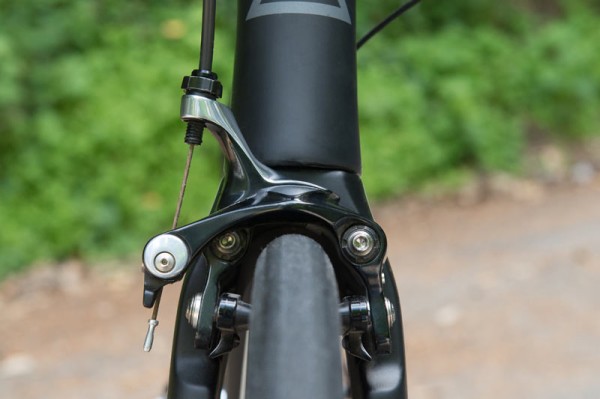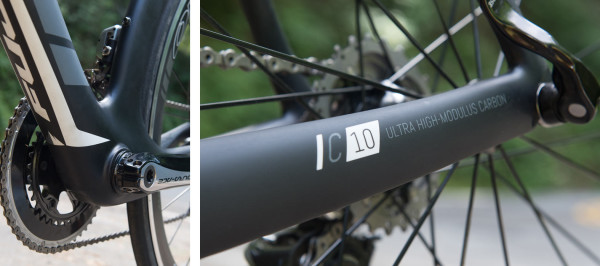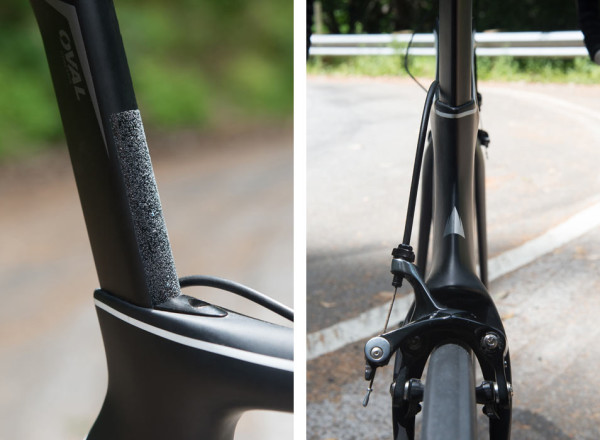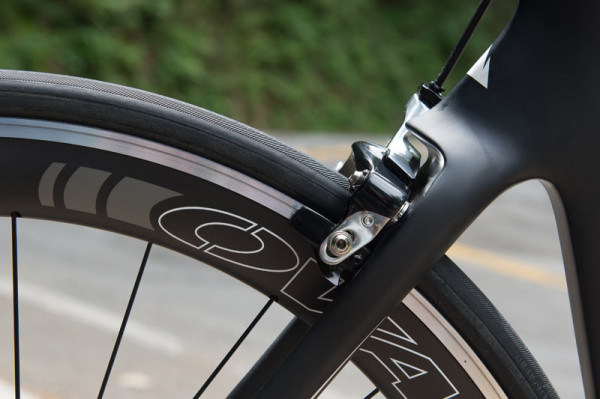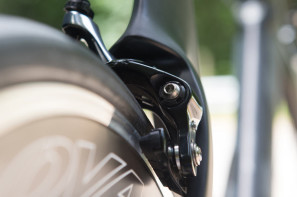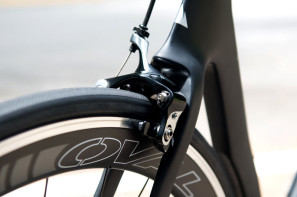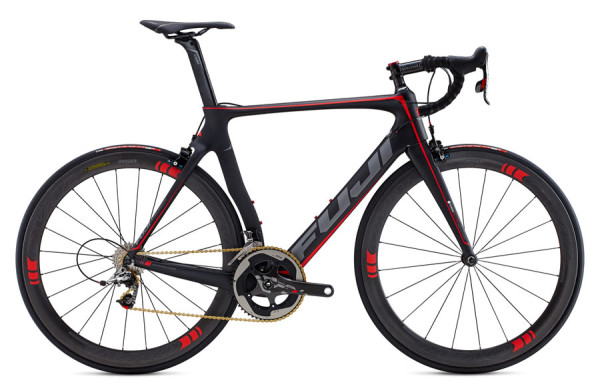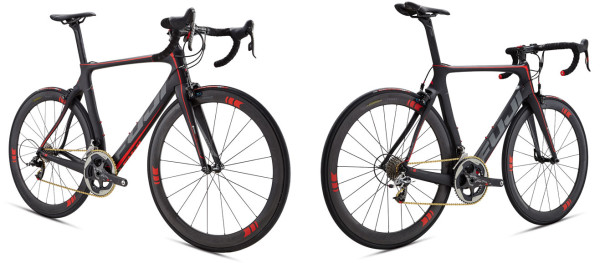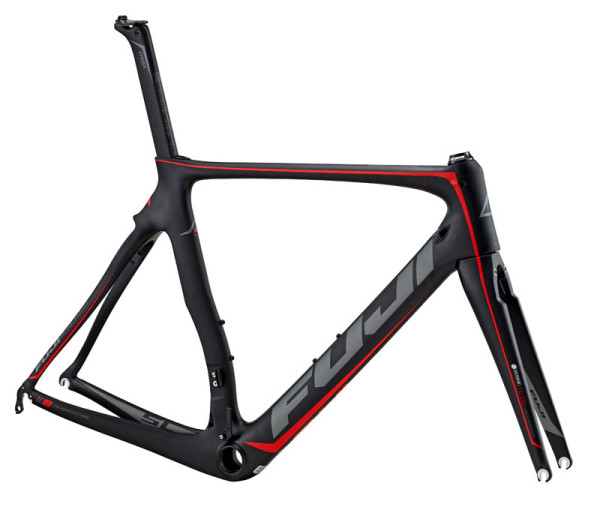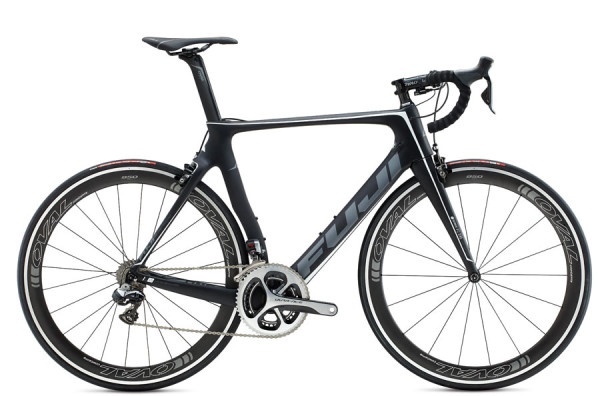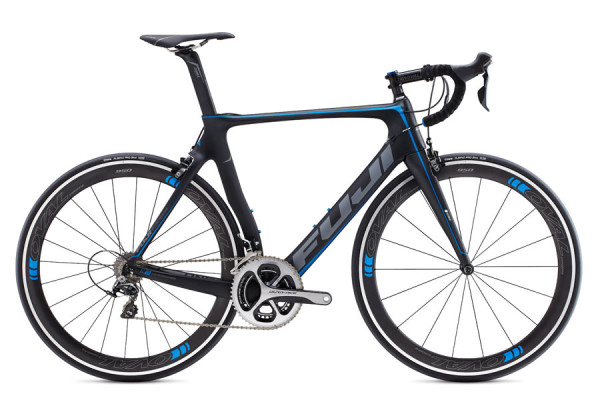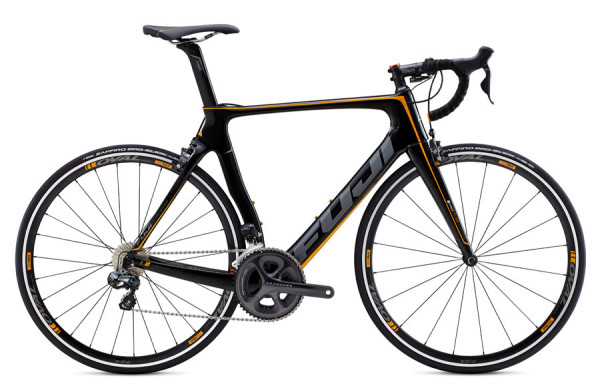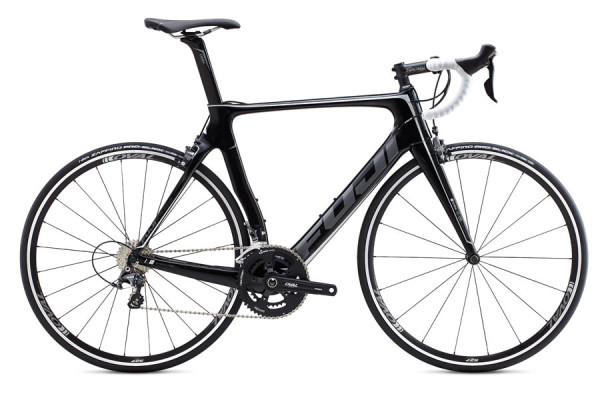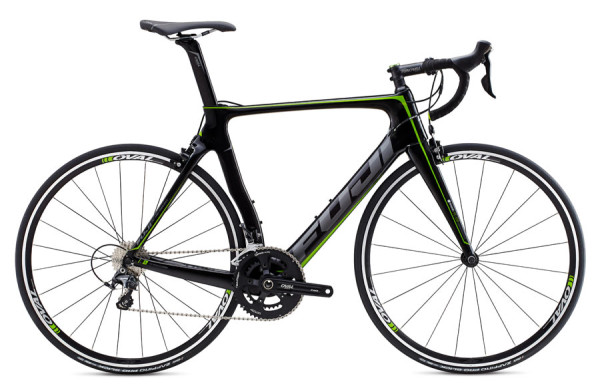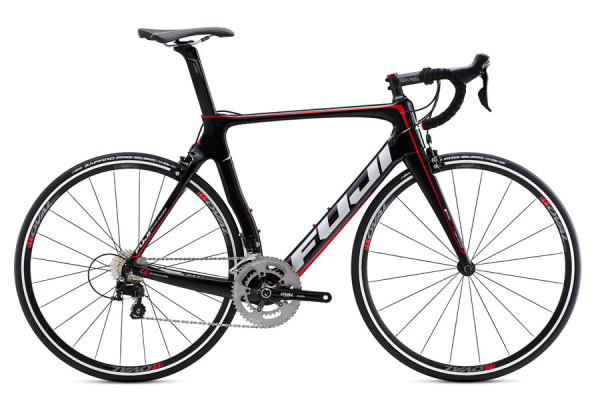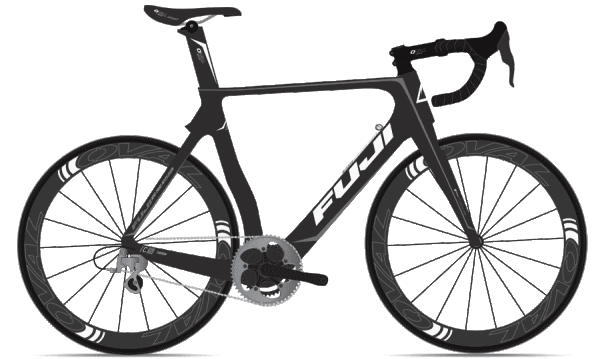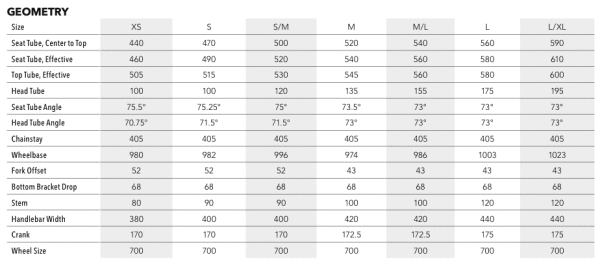The all-new 2015 Fuji Transonic aero road bike is an amalgamation of both existing frame development from their other road bikes as well as feedback from experts, pro riders and mechanics. That last bit is what makes the Transonic a bit different from other modern aero rides, putting the rear brake (which is actually a front brake) in the normal location rather than hiding it under the BB.
“It’s extremely challenging to set up and maneuver around the crankset when the brake’s mounted under the chainstay, and it’s impossible for a mechanic to adjust in a race situation hanging out of the car. The rider would have to stop,” said Senior Fuji Road Product Manager Steve Fairchild. “So from a stiffness and aerodynamics standpoint, mounting the rear brake makes a lot of sense; but from a service standpoint, it’s illogical. We realized that during the design process, so we worked directly with Shimano to modify their front brake design and apply it to a rear seatstay position. There it gives both mechanics and riders easy access for adjustments and wheel changes and allows for confirmation that the wheel and brake aren’t rubbing after a change.”
And then, of course, there’s the aerodynamics…
“We first released our SST in 2009, designed with the input of sprinter Ivan Dominguez and aimed at creating an extraordinarily stiff platform that would thrive in crits and bunch sprints. We next introduced our Altamira in 2011, a collaboration with the climbers of Fuji-Servetto. Ultra-lightweight and designed to excel on steep gradients, it’s since won a grand tour title and plenty of queen stage summit finishes,” explained Fairchild. “So with the Transonic, we partnered with our pro team NetApp-Endura and sought out a new focus: speed – a bike with superior aerodynamics that would shine especially on flat or rolling terrain. We like to think of it as Stiffer, Lighter, and now: Faster.”
According to their A2 Wind Tunnel tests, the Transonic has a 121g reduction in drag averaged across yaw from 0-20 degrees compared to the SST and a 118g reduction in drag compared to the Altamira. They say that translates to 65 seconds faster than the SST and 55 seconds faster than the Altamira for a rider putting out a steady 300 watts over a 40km course.
There’s not a sharp edge to be found on the Transonic, which not only makes it smooth through the air but takes full advantage of carbon fiber’s upsides to let them tune the ride. The fork’s crown is recessed on the front to bring the brake into the shaping a bit, then melds into the downtube like on their Norcom Straight TT/Tri bike. Head angle and fork offset prioritized confidence on the descents and stability at speed rather than crit-bike sharpness.
All that aero wouldn’t matter if the bike couldn’t also lay down the power. The bottom half of the bike is massive, with huge downtube cross sections, a colossal PFBB30 shell and oversized asymmetric chainstays. Fuji says they’re wider than what you’ll typically find on aero bikes, which makes it very stiff, but they’re still aero shaped. An integrated chainkeeper helps prevent chain drops.
One-series frames use their C10 Ultra High-Modulus carbon fiber where needed, and 2-series frames get C5 High-Modulus.
The seatpost has a proprietary aero shape with a hidden clamp/bolt and roughened front surface to prevent slippage. Di2-equipped models fit the battery inside the seatpost to keep it out of the wind. The pics provided don’t do justice to all of the shaping done on the Transonic’s frame, but the video below provides a lot of different angles.
Back to the brakes: By using a tweaked direct mount front brake from Shimano, Fuji could keep it within easy reach of mechanics, provide solid braking and still tuck it out of the wind.
The caliper is almost completely hidden behind the seatstays save for the cable stop and pulley.
MODELS & GEOMETRY
The Transonic line is led by the SL, which uses their C10 carbon and comes with full SRAM Red 22 and carbon Oval Concepts (Fuji’s house brand) cockpit and carbon clincher wheels, Vittoria tires and KMC chain. Brakes are Tektro TRP direct mount.
Retail for the complete bike is a very reasonable $5,699 (€4,999).
Frameset is $2,199 (€1,699) and includes seatpost and headset.
Transonic 1.1 gets Shimano Dura-Ace Di2 and Oval carbon/alloy clinchers at $6,299 (€5,999). All but the lowest end model use Praxis bottom bracket converters to fit the Shimano cranksets into the PFBB30 shell.
Transonic 1.3 switches to mechanical Dura-Ace 9000 for $4,699 (€4,299).
Transonic 2.1 is the top model with the lower level C5 carbon. It gets Ultegra Di2 with Ultegra direct mount brakes, KMC chain and Oval’s tubeless ready (yay!) aero alloy clinchers with Vittoria tires. Retail is $3,549 (€3,299).
Transonic 2.3 has a mechanical Ultegra build with 105 cassette, Oval alloy wheels and cockpit for $2,399 (€2,299).
Transonic 2.5 also gets a Ultegra shifters and derailleus, but drops down to 105-level direct mount brakes, Oval crankset and lower level wheels. Retail is $1,999 (€1,999)
Transonic 2.7 gets a full 105 build with Oval cranks for $1,889 (€1,799)
The upcoming Transonic 2.9 will be a US-only model and have an FSA Gossamer compact crankset and BB, 105 shifters and derailleurs, Sunrace cassette and Tektro brakes. Retail is $1,749.
